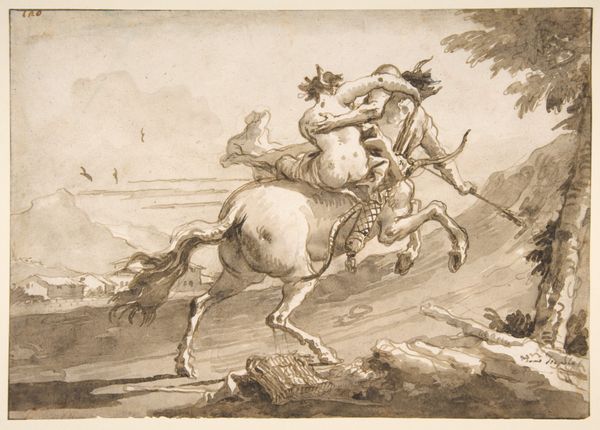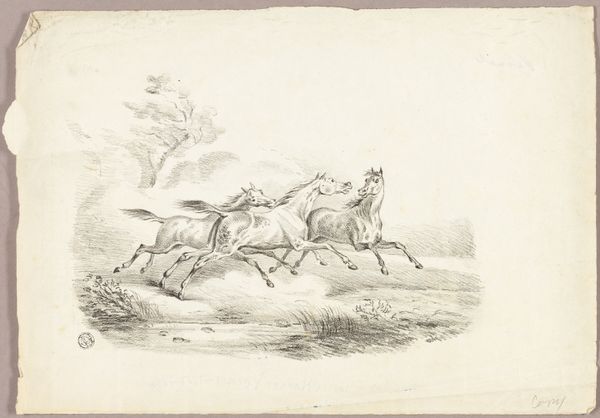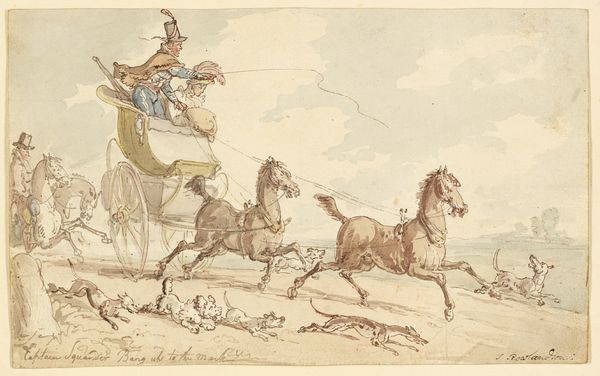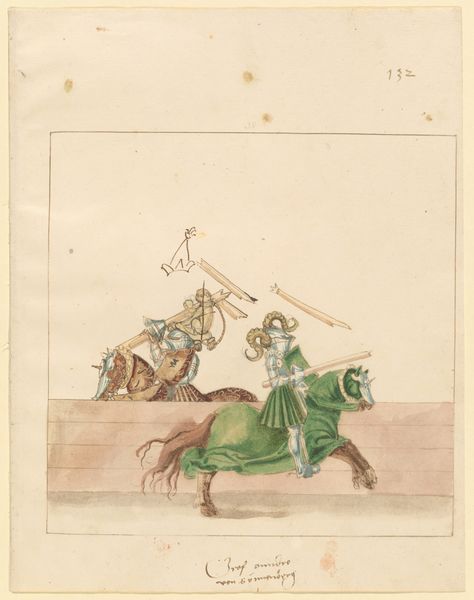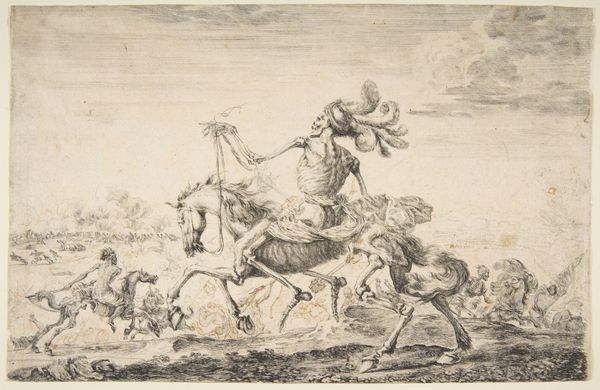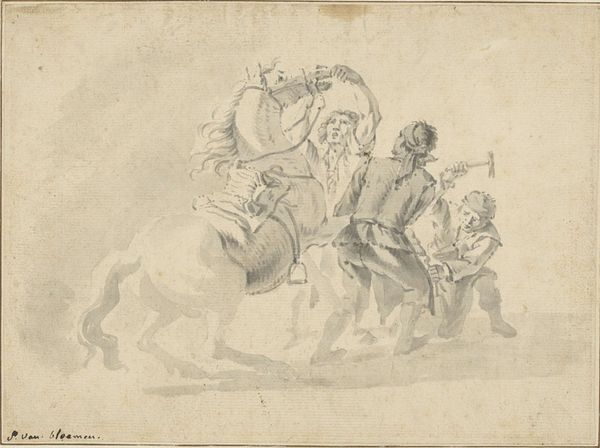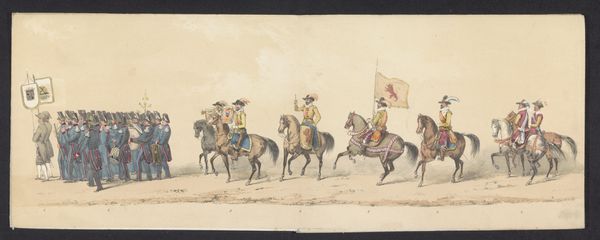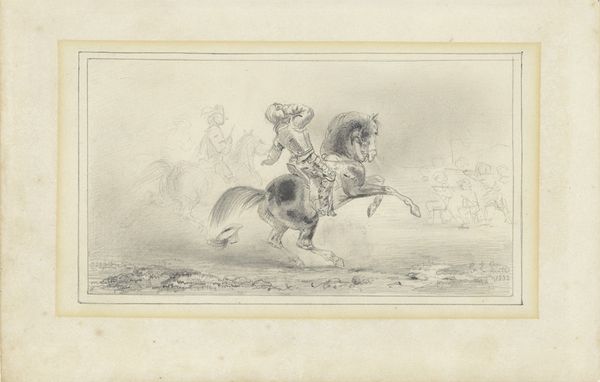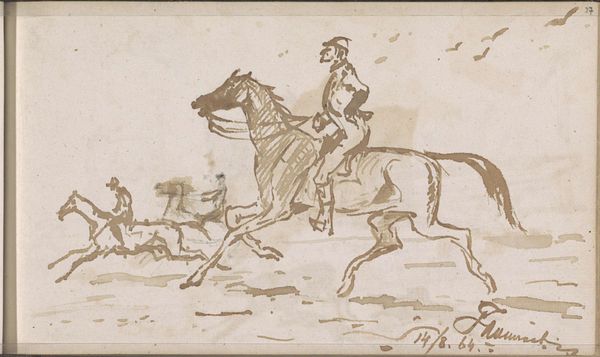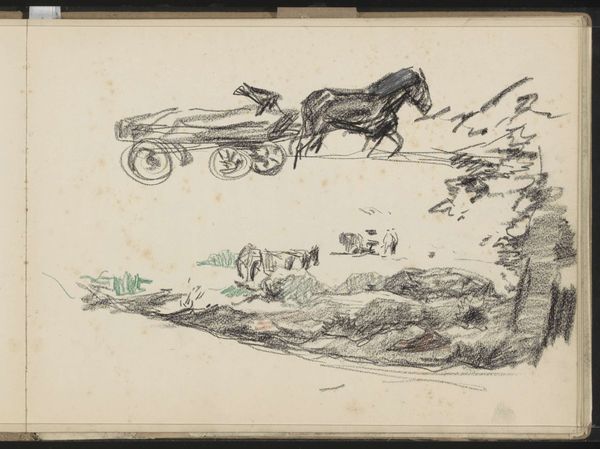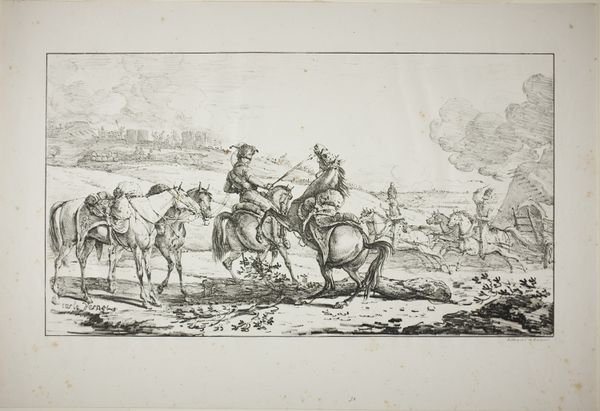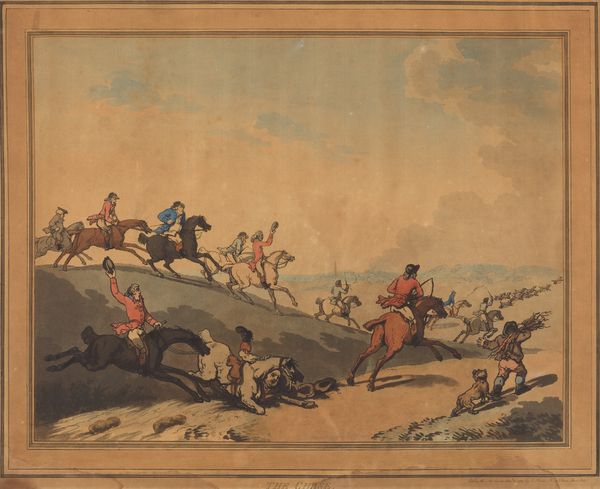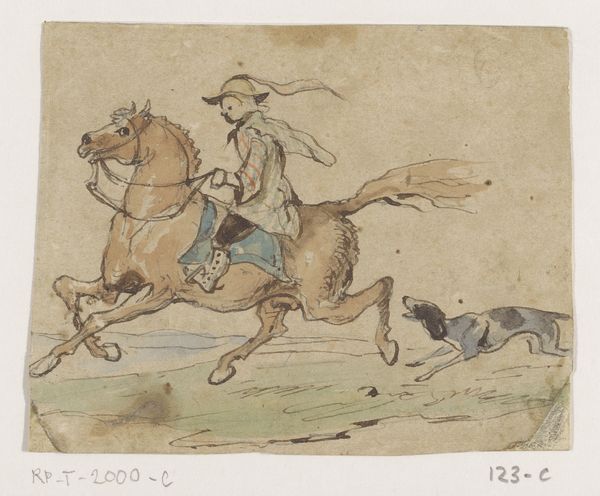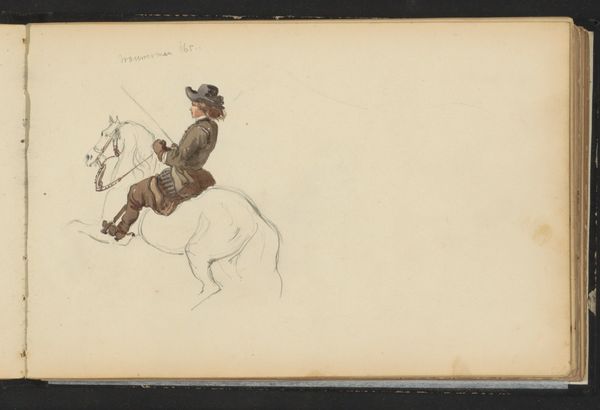
drawing, watercolor, ink
#
drawing
#
allegory
#
ink painting
#
landscape
#
fantasy-art
#
watercolor
#
ink
#
romanticism
#
watercolour illustration
Dimensions: 368 mm (height) x 534 mm (width) (bladmaal)
Editor: This is "Amor (Eros) driving a chariot on the rainbow" created sometime between 1765 and 1865 by Jens Petersen Lund. It's done in ink and watercolor. The figures are so delicately rendered, but there's an underlying sense of grandiosity in the subject. How do you interpret this work and its place within the art of its time? Curator: Well, immediately, I see a work deeply embedded in the aesthetic and social concerns of the late 18th and early 19th centuries. It appears to draw from classical allegories popular during that period. Can you think of the socio-political environment in which it was created? Editor: Considering the timeline, it seems situated amidst significant upheaval. Revolutions, the rise of nationalism, a questioning of established power structures… Curator: Precisely. How might those events and new societal dynamics be mirrored, or perhaps challenged, by this image? It's worth noting how the rainbow itself became such a charged symbol for utopian thinkers and revolutionaries in this era. How might the chariot ride of "Amor" figure within those emerging ideologies? Editor: That’s interesting, I was thinking about it being more generally Romantic, but framing it against specific political events adds a really fascinating dimension! Curator: To what extent was Romanticism, at that time, a political and even radical force? Don’t you find the seeming gentleness and fantasy aesthetics sometimes worked hand-in-hand with expressions of profound societal transformation? And let's also remember the role the burgeoning museum culture played in defining art's public purpose. Editor: So, the act of placing it in a museum inherently assigns it a new layer of meaning related to public education and national identity. I suppose I hadn’t fully appreciated that connection. Thanks! Curator: And for me, your observation enriches my understanding! By emphasizing the fantasy elements of romanticism, you point towards the value of the dream-state during times of major societal transformations.
Comments
No comments
Be the first to comment and join the conversation on the ultimate creative platform.
